SEARCH






|
|
|
|


Pavol Stranak's passion for photography made traveling addictive for him. He has always dreamed of distant lands, adventurous indigenous people, uncharted territories and special cultures. With the passing years, his dream became reality. He tries to offer honest insight, first-hand impressions, experiences acquired during expeditions to various parts of the world. Take a peek at his fabulous work and learn more about his personality!
Briefly tell us about yourself, your hobbies and other jobs.
I was born in Nitra in Western Slovakia. I have three children. Together with my wife we nurture a 5 year old boy and 3 year old twins - boy and girl. So much for my hobby. I graduated from the Faculty of civil engineering and I work as a civil engineer.
I organize traveler trips, most often with my wife Mariana. I create documentary photography, portraits of local people, landscapes if I succeed. I write travel reportages and publish them in Slovak and foreign magazines. At this stage I begin to turn my attention to the commercial, especially wedding photos. I found that in this area documentary and portrait photographers can achieve interesting results. I still like it.
Which are your most important experiences that have influenced your art and what first attracted you to photography?
I remember the question of teachers in elementary school, that was "What profession do you want to perform? What direction would you like to continue in high school?" I replied that I want to be a photographer, but especially because the diving and travel schools were not a choice and that I would become the second Marco Van Basten was not very realistic too.
As a child, I drew exceptionally well, but when the talent is not developed it can become extinct.
I really started taking photographs in 2007, when I realized my first traveler's journey to Sri Lanka. I always wanted to travel. Together with my friend Stanislav - at that time a medical student, now a doctor - we participated to a major expedition of Slovak travelers to the island of New Guinea which was around the year 2000, one of the last areas of the world with true wilderness areas and natural people. I read books, watch movies. Ladislav Gulík did the best expedition, the best documentary and the best travel and photography book too. And I finally decided to see New Guinea before I will be 33. I managed to do so five years ahead of schedule. So my photography is part of my passions in one package - traveling, writing and photography.
Describe your overall photographic vision and why are you so drawn by documentary photography?
I like art as such. Painters, architecture, particularly literature. Hemingway, Steinbeck, Marquez are my favorite authors. I focus in photographic genres where art and reality are in balance. Landscapes, nature, portrait and documentary photography. Here art can portray reality. If the own contribution is tasteful and the result is valuable, then I have succeed. I like that documentary photography is possible not only for to capture the austere reality or true beauty where people enjoy watching, but also to portray the reality in a way that you later discover that it is actually beautiful. In the best documentary photography there is hidden bequest.
What is more important to you, the mood/story behind your images or the technical perfection?
Everything must be in balance. Certainly it is true, that when the photos are excellence in their content aspect, some technical flaws can be forgiven. The opposite is not true. Empty of content and technically superior pictures are unnecessary. Especially now, that digital photography has reached such a level that you shoot with anything, if the result appears wrong the error is usually not in the technique.
Do you prepare carefully the locations where you are intending to photograph?
Yes I do, when photographing a feast as the Toka ceremony on the island of Tanna or an event as the Camel Fair in Indian Pushkar. Generally I photograph these events for a few days, at the least for a few hours. During that time I become invisible and blend with the crowd, or vice versa, to get acquainted with people and get closer to them. So it can be achieved that you will not be deceived, but capture the reality. I handle this also thanks to the meticulous preparations. Today is the time of information and lack of time. Thanks to a good preparation I minimizes the risk that I do not handle the rare and expensive journey photographically well. Another good reason to prepare for the photo shoot is the fact that for most of the interesting places there are already many good photos available. If you do not prepare, it is almost guaranteed that you will find out at home that someone before you has already produced almost identical pictures. If I prepare, I know in advance that I must have a shot with special own contributions. This is especially true in the landscape photography of places like the Taj Mahal for example.
On the island of Tanna in the Melanesian archipelago of Vanuatu, I had planned to photograph the active volcano Yasur. I traveled together with my friend Marian. We stayed in a dubious palm hut near the volcano. For two days it rained, so it was impossible to do anything. When the rain stopped we went immediately on a hike to the peak of the volcano. Some tourists are trucked closely under the top by off-road cars. We tracked the entire route. This way we had an opportunity to be alone at the top of the volcano. We arrived in advance. I checked the place thoroughly, designed the composition and spread and unpacked the tripod at an ideal location. Then other tourists were coming. There were not many, but among them was a crew from the Japanese television. Mister cameraman had the carrier of camera, the stagehand, the carrier of tripod and of equipment. He had no choice but to unpack in the second most ideal place. So the preparation and the contact with the natives was critical. News was brought to us from the local Chief that the shaman warned of rain for the approaching festivity of Toka. As a result, we could go to the top earlier than anyone else.
What gear do you use (camera, lenses, bag)?
What software do you use to process your images?
I use Pentax. I chose this system just because of the expedition to New Guinea. I had the impression that it offers the best ratio of price, quality and moisture resistance. Now I use Pentax K3 and lenses 15, 31, 50-135 and 300 mm. I use Photoshop and filters such as the Nik Collection. I like that for example also Gianni Giansanti worked with the Pentax system when he documented tribes living in the basin of the Omo River in Ethiopia. The book that resulted was ‘Mysterious Africa’.
Can you tell us something more about your work flow?
I try to be disciplined, and the first thing after several weeks of a photographic tour, is to embark on a selection of photos that have been successful. Then I play with them. With some more, with others less. All chosen photos undergo the procedure: Camera Raw and basic editing of curves, the overall adjustment in Photoshop, using Nik filters if appropriate or transfer to BW, assigning calibrated monitor ICC profiles, save the file in TIFF format. If it is photos for the web than I convert to JPG.
What is your most important advice to a beginner in documentary photography and how do you get started?
I borrow a sentence of Robert Capa: "If your pictures are not good enough, you were not close enough" I understand it in the broader significance. Near means to learn, to respond to local people like on a visit, with humility, with smiles and to have social contact.
Who are your favorite photographers and more importantly, how has your appreciation of their work affected how you approach your own photography?
My hero is Steve McCurry, he is unmatched in the photographic genres that I try to devote myself too. Especially in his ability to express the whole event, say everything with one photo. He does not need a story series. If Steve photographed the wedding, newlyweds would be enough to give one perfect photo.
Is there any specific photo taken by another photographer that has inspired you a big deal and why?
There are pictures which can influence world events and millions of people through their strength. Robert Capa, Dorothea Lange and Kevin Carter produced them. From contemporary authors there is Brent Stirton and his photo journalistic works, for example about Virunga NP in Congo
The importance of his work has great meaning. Thanks to him rangers in Virunga NP have received publicity on a global scale. His work is helping the group of clever, brave and dedicated people in their heroic efforts of restoring and enhancing the National Park, and they draw attention to their incredible fight against poachers and adverse circumstances, and thus supports the effort to save gorillas in the Congo.
Are there any specific directions that you would like to take your photography in the future or any specific goals that you wish to achieve?
I would like to put my mind to documentary photography 3 times more intensive than now and would like to become a full time professional.
Describe your favorite photograph taken by you and why it is special to you?
I would love to have produced at least one photo that will win world competitions and become iconic. Such photos can also be found here at 1X, but I am not their author. If someone takes such a photograph, it will be my favorite.
Is there anything else you wish to add and what do you think about 1X as a home base for your work?
1X is photographic home for me. I remember how difficult it was when I was registered in 2012. How difficult it was to recognize the importance of a rigorous perspective on my own work. How many failures eventually led to the first publication and the joy and great feeling. The number of virtual social friends did not decide, but rigorous screening and true professionals. I am not an exemplary user of functions of web sites such as a forum for criticism of photographs. However, that part of the site, together with the active involvement of members in the screening, or the collection of tutorials, make a distinction between 1x and other sites. 1x is for every good photographer a great place to present their work. Photographers have the opportunity to become part of a great community and to participate in creating the best photographic collection on the net. Every day I watch new publications and have the pleasure of seeing amazing quality in all categories.
Thanks for the opportunity!
 | Write |
 | Ralf Stelander FOUNDER Excellent work and story, I really enjoy your photography! |
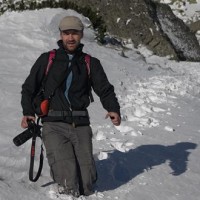 | Pavol Stranak PRO Thank you very much Ralf! |
 | Edith Hoffman Wonderful work and interview Pavol, congratulations! Have a great week and take care :-) |
 | Pavol Stranak PRO Thank you very much dear Edith :-) |
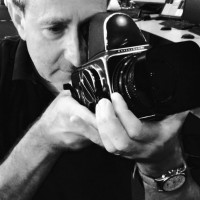 | Nick van Dijk Fantastic work Pavol; really impressive! And well done Yvette ';-D . Grtz, Nick |
 | Pavol Stranak PRO Thank you for the compliment Nick! |
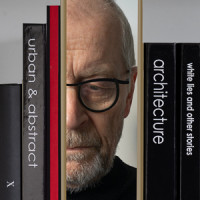 | Luc Vangindertael (laGrange) CREW Congratulations Pavol, you are one of the great documentary photographers on 1X. I enjoyed reading your story :-) |
 | Pavol Stranak PRO Thank you so much for your kind words, Luc! Im pleased that you liked the interview. |
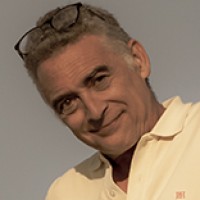 | Martin Zalba Fantastic report, Pavol, congrats! |
 | Pavol Stranak PRO Thank you very much Martin, much appreciated! |
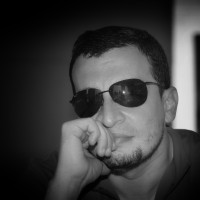 | Ahmed Thabet PRO what a wonderful photography adventures |
 | Pavol Stranak PRO Thank you very much Ahmed! |
 | Yvette Depaepe CREW Excellent and interesting interview, Pavol! Thank you so much for your fine collaboration (and your patience), my friend. Cheers, Yvette |
 | Pavol Stranak PRO Thank you for the opportunity Yvette. As the saying goes: to the good stuff you have to wait :-) Thank you, Pavol |